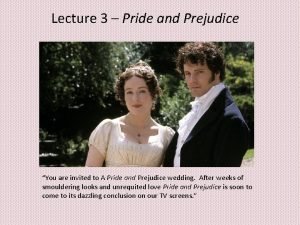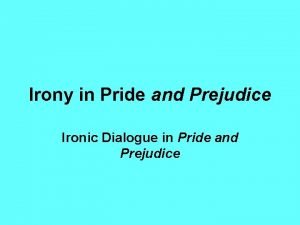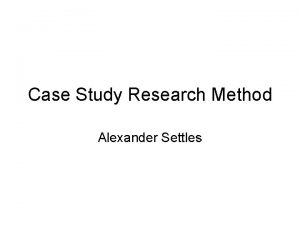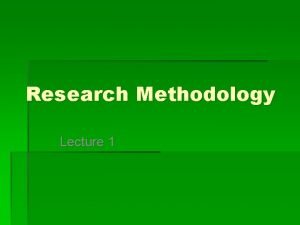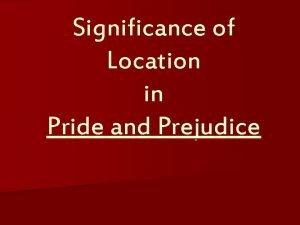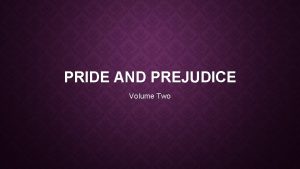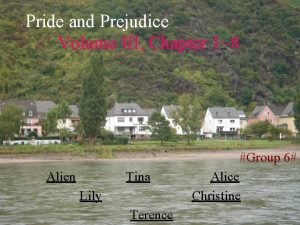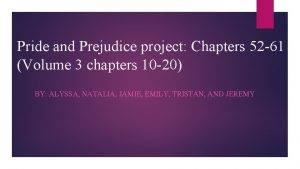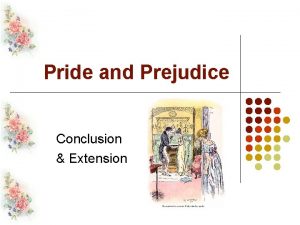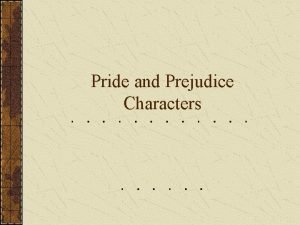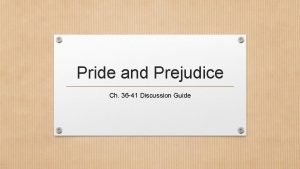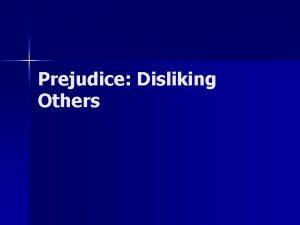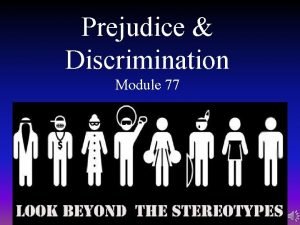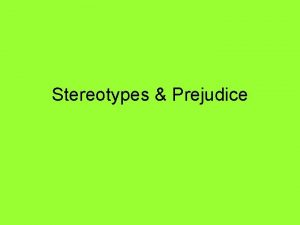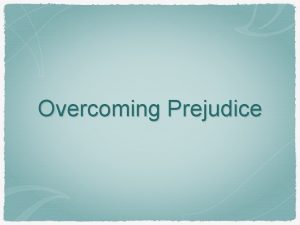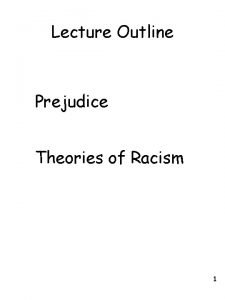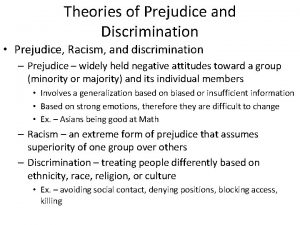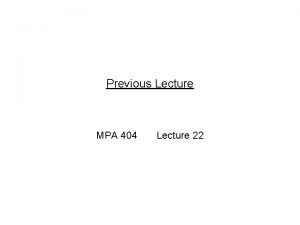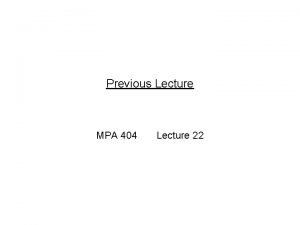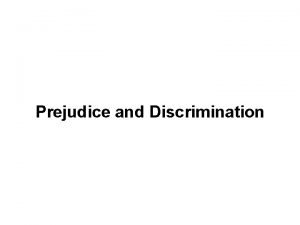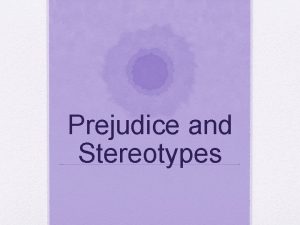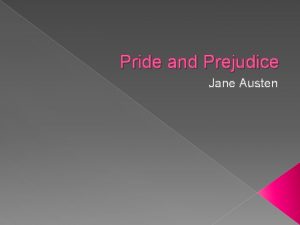Prejudice Theories and research Definitions from previous lecture


















- Slides: 18

Prejudice Theories and research

Definitions (from previous lecture) n Stereotypes Specific traits attributed to people based on group membership (stereotypes are protypes!) n Prejudice (opposite of allophilia) Negative attitudes toward the members of a specific group n Discrimination Negative behaviors directed toward members of a specific group

Types of prejudice n Discrimination can be institutional or interpersonal, but prejudice is always interpersonal n Prejudice has two components n n Emotional (how you feel about a group) Cognitive (what you think about a group) especially the group’s intent and competence to pursue it n Prejudice has many targets n n n n n Racism Linguicism Ageism Religious intolerance Heterosexism Political intolerance Classism Ableism Sexism

Racial Intergroup Relations Declining

Four types of outgroups

Perception of outgroups (measures) As viewed by society, how _____ are members of this group? Competent Confident Independent Competetive Intelligent As viewed by society, how _____ are members of this group? Tolerant Warm Good natured Sincere Fiske et al. , 2002, JPSP, 82, 878 -902

Perception of outgroups Student sample Paternalistic prejudice Allophilia Contemptuous prejudice Envious prejudice Fiske et al. , 2002, JPSP, 82, 878 -902

Perception of outgroups Student sample Fiske et al. , 2002, JPSP, 82, 878 -902 Community sample in Amherst, MA

Perceptions of outgroups

Theories of prejudice (realistic conflict) n Realistic Conflict Theory (Sherif, 1961) n Process n n We compete over scarce resources During competition, the “other” is considered an enemy to justify trying to “win” Enemy is then dehumanized and scapegoated Evidence n n n 1958 Southern State lynching study Sherif’s Robber’s Cave study (next 3 slides) Some limitations § Doesn’t explain why there is no inter-occupation conflict § Doesn’t explain why prejudice occurs when there is little competition

Robbers Cave Experiment

Robbers Cave Study Stage 1: In-group formation

Robbers Cave Study Stage 2: Group competition

Robbers Cave Study Stage 3: In-group formation

Even the Well-Intentioned Have Bias Fiske (2002) - in Western cultures: n about 10% of individuals show blatant racism n about 80% show subtle racial biases n n n avoidance of interactions withholding of liking, respect, positive emotions awkwardness slips of the tongue stereotypic assumptions and judgments Susan Fiske (2002) What we know about bias and intergroup conflict, the problem of the century

Three theories of subtle prejudice n Modern or symbolic racism n n Blaming the victim Support of policies that all happen to disadvantage racial minorities n Ambivalent racism n n n (Katz & Hass, 1988) High scores on pro-Black attitudes (pity for the disadvantaged) High scores on anti-Black attitudes (hostility toward the deviant) n Aversive racism n (Kinder & Sears, 1981) (Gaertner & Dovidio, 1986) A desire to be egalitarian and non-racist Unconscious racist cognitions that are manifested during stress or ambiguity

Scenes from Crash: Aversive Racism n Character development n Racism or not racism

Fighting prejudice n Contact theory (antidote to realistic group conflict) n Equal status contact n Contact should have high acquaintance potential n Out-group members must not conform to stereotypes n Contact situation must encourage cooperation n Group contact must be supported by authority
 Pride and prejudice lecture
Pride and prejudice lecture How does sociology interpret hate crimes
How does sociology interpret hate crimes 01:640:244 lecture notes - lecture 15: plat, idah, farad
01:640:244 lecture notes - lecture 15: plat, idah, farad Examples of irony in pride and prejudice
Examples of irony in pride and prejudice Building theories from case study research
Building theories from case study research Research method notes
Research method notes Slidetodoc download
Slidetodoc download Research meaning
Research meaning Location of pride and prejudice
Location of pride and prejudice Pride and prejudice volume 2
Pride and prejudice volume 2 Chapter 18 pride and prejudice
Chapter 18 pride and prejudice What chapter does volume 3 of pride and prejudice start
What chapter does volume 3 of pride and prejudice start Conclusion of prejudice
Conclusion of prejudice Pride and prejudice character names
Pride and prejudice character names Pride and prejudice chapter 43
Pride and prejudice chapter 43 Pride and prejudice historical context
Pride and prejudice historical context Nature and power of prejudice
Nature and power of prejudice Usually negative, _____ is an attitude or prejudgment.
Usually negative, _____ is an attitude or prejudgment. Being mr wickham
Being mr wickham
